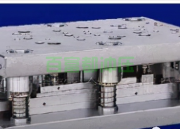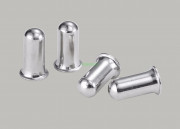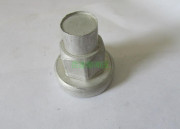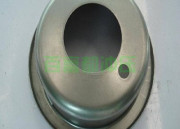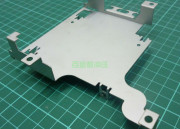How to deal with common problems in the processing of drawing molds?
1. In terms of the original data of the molded workpiece, after the appearance processing of the original data, such as phosphating, spraying or other appearance processing, the appearance of the molding data forms a layer of non-metallic mold, which can greatly reduce or eliminate the strain of the workpiece. . This approach is often costly and requires additional production equipment and production processes. While this method is sometimes effective, it is rarely used in actual production.
2. Adding a layer of polyvinyl chloride and other films between the metal parts and the mold, between the mold and the forming data can sometimes solve the problem of workpiece strain. For the production line to continuously supply the film through the organization, for the stamping equipment for periodic production, each production part needs to add the film, which affects the productivity. The overall cost of this method is also high and a lot of waste is generated. This method can be used for the production of small batches and large workpieces. In the case of very small forming load, sometimes lubricating oil or lubricating oil with EP additives can solve the problem of workpiece strain.
3. In terms of mold, the mold is convex. Die data or die convex. Manipulate the appearance of the die or select the appropriate die data to change the nature of the contact between the drawing data and the punch. Practice has proved that this is an economical and practical strain treatment method, and it is also a method widely used at present. To sum up, deal with deep drawing and workpiece as well as die convex. There are many ways to strain the appearance of a die. For detailed cases, the selection should be based on artifacts and negative sizes. mass production. Type of processing data, etc.
The shape of the drawing piece is complex and diverse, and the dimensional accuracy is required to be high. The processed product is on the same level as the cut product, and the processed cut surface is flat. It’s very smooth and bright. It is more difficult to machine than other crafts. It can process gear fine-blanking parts with small modulus and high precision, and the drawn parts have clear outline and small slump angle. Drawing parts mainly rely on the pressure of the press to process metal or non-metal data through the die. The workpieces processed by drawing parts have high precision and can reach the micron level. Compared with other workpieces, it has the advantages of light weight, thin thickness, uniform distribution and strong pressure resistance. In the process of processing, large-scale production, shortening processing time, one-time molding, no need for other processing. Mainly used in automobile brakes, automobiles, motorcycles and other products. It is an economical and fast electromechanical product.
Let’s popularize some questions about stretch pieces so you can gain some expertise by learning to understand them clearly.
1. Blanking – deep drawing, suitable for shallow drawing or deep drawing?
Blanking-Drawing is suitable for shallow drawn parts, because the steel plate is compressed during blanking and the steel plate is also compressed during deep drawing. Therefore, on this basis, the above-mentioned corresponding theory will appear. There is no doubt about that.
2. How to roll the thread on the stretched part?
In this case, in the opinion of the manufacturer of stretched parts without Xizhongnan lighting fixtures, because it is not applicable, the general rolling method cannot be used, but a mandrel is first passed through the stretched part, and then the rolling can be successfully completed operate.
3. How to prevent the stretched parts from pulling?
In order to prevent hair problems in stretched parts, there are approaches we can take that may be noticed. The main points are as follows:
First, the die used has a smooth appearance and should be smooth when drawing.
Second, the hardness of the mold material should not be too low.
Third, do a good job of cleaning the stretched parts, and there should be no dust and dirt.
For stretched parts, the above problems can be said to be very important and basic. I have never done it before. I hope everyone can study and understand carefully, so as to master them in time, and gain something, develop, and develop in the process of product learning. Breakthrough.
The above is about the processing dies of stretched parts, as well as some common sense of the processing of stretched parts. Many customers actually know a little when they choose the manufacturer of stretched parts, so it is easy to be ignored in many professional issues. But this is the professional side of the tensile parts processing factory, and it is recommended to choose carefully. Hope the above content can be helpful to readers.
Read More →












